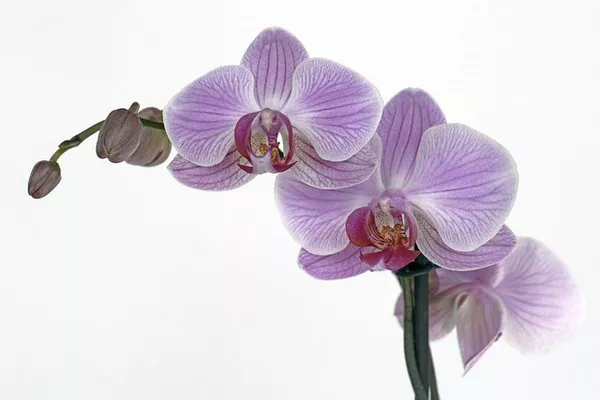Orchids are magnificent and delicate flowers that captivate us with their beauty and grace. As a devoted orchid enthusiast, you might have experienced the joy of seeing your orchids bloom in all their glory. However, once the blooming season ends, you might wonder how to encourage your orchids to reflower. Fear not! In this comprehensive guide, we will delve into five crucial aspects that will help you master the art of getting your orchids to reflower successfully. Whether you are a seasoned orchid lover or a novice gardener, these steps will elevate your orchid-care skills and revive the enchanting blossoms in your collection.
Providing the Right Lighting
1. Understanding Orchid Light Requirements:
One of the fundamental factors influencing orchid blooming is the right amount of light. Orchids generally prefer bright, indirect light that mimics their natural habitat. Placing them near east-facing or south-facing windows allows them to receive gentle morning sunlight without being exposed to the harsh afternoon rays.
2. Avoiding Direct Sunlight:
While orchids love light, they dislike direct sunlight, as it can cause their delicate leaves to scorch and wither. To prevent sunburn, provide filtered or diffused light, or use sheer curtains to soften the sun’s intensity.
3. Supplementing with Artificial Light:
If you live in an area with limited natural light, consider using artificial grow lights to supplement your orchids’ lighting needs. Specialized LED grow lights designed for orchids can provide the optimal spectrum of light, encouraging robust growth and flowering.
Maintaining Optimal Temperature and Humidity
1. Orchid Temperature Requirements:
Orchids are highly sensitive to temperature fluctuations. To stimulate reblooming, maintain daytime temperatures between 65°F to 80°F (18°C to 27°C) and nighttime temperatures between 55°F to 65°F (13°C to 18°C). Providing a consistent temperature range is essential for your orchids’ well-being.
2. Emphasizing Humidity:
Orchids are accustomed to high humidity in their natural environment. To mimic these conditions, increase humidity levels around your orchids, especially if you live in a dry climate or during the winter months when indoor heating reduces humidity. A humidity tray filled with water and pebbles can help maintain adequate moisture levels.
3. Avoiding Temperature Extremes:
Orchids dislike sudden temperature fluctuations. Avoid placing them near drafty windows, air conditioning vents, or heating sources that may subject them to extreme temperature changes.
Mastering Watering Techniques
1. Orchid Watering Frequency:
Watering orchids correctly is crucial for successful reblooming. Overwatering can lead to root rot, while underwatering can cause the orchids to become dehydrated. Water your orchids when the potting medium feels almost dry, typically every 7-10 days.
2. Choosing the Right Water:
The type of water you use matters for orchids. They are sensitive to chemicals and minerals found in tap water, so opt for filtered, distilled, or rainwater whenever possible. This will help prevent the accumulation of harmful salts and minerals in the growing medium.
3. Preventing Waterlogging:
Ensure that your orchid pots have drainage holes and never allow them to sit in standing water. Waterlogged roots can lead to root rot and hinder the plant’s ability to reflower.
Proper Fertilizing Practices
1. Orchid Fertilizer Selection:
Selecting the appropriate orchid fertilizer is crucial for promoting flowering and overall plant health. Choose a balanced fertilizer with equal amounts of nitrogen (N), phosphorus (P), and potassium (K). Additionally, look for a fertilizer specifically formulated for orchids.
2. Fertilizing Frequency:
During the active growing season, which usually spans from spring to early fall, fertilize your orchids every two to four weeks. As winter approaches and the orchids enter their resting phase, reduce the frequency to once a month.
3. Applying Fertilizer Correctly:
To avoid over-fertilizing, follow the manufacturer’s instructions for dosage. Over-fertilization can lead to nutrient imbalances and damage your orchids.
Repotting and Pruning for Healthy Blooms
1. Orchid Repotting:
Regular repotting is essential for maintaining healthy orchids and encouraging reflowering. When you notice that the potting medium has broken down or the plant has outgrown its container, it’s time to repot. Gently remove the old medium, trim dead roots, and replant in fresh orchid mix.
2. Pruning for New Growth:
Regularly inspect your orchids for faded flowers and dead or yellowing leaves. Pruning these spent parts will direct the plant’s energy towards new growth and budding flower spikes.
3. Pest and Disease Control:
Keep a vigilant eye on your orchids to detect and address any signs of pests or diseases promptly. Early intervention will safeguard your plants and promote successful reblooming.
Conclusion:
Witnessing your orchids reflower is a gratifying experience that rewards your dedication and care. By mastering the art of providing the right lighting, maintaining optimal temperature and humidity, watering correctly, fertilizing appropriately, and implementing proper pruning and repotting techniques, you’ll be well on your way to becoming a skilled orchid enthusiast. Remember, each orchid is unique, so don’t be afraid to experiment and fine-tune your care routine to suit your specific plants. With patience and persistence, you’ll enjoy a stunning array of blossoms that will fill your home with natural beauty and elegance throughout the year. Happy orchid gardening!


